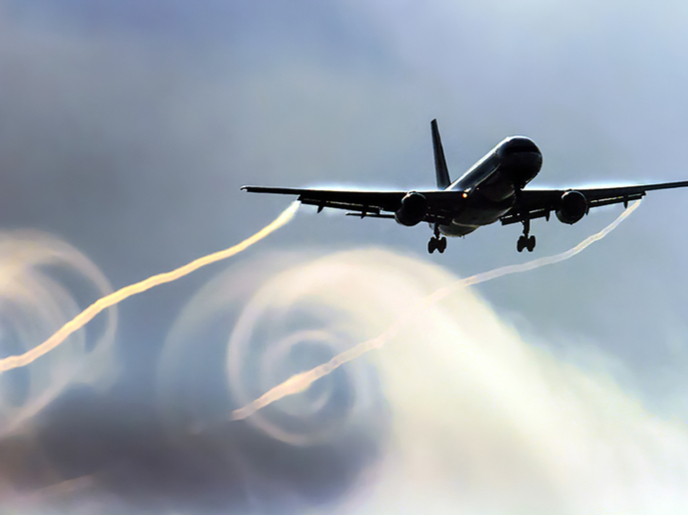How to improve airport capacity and efficiency with revised standards
Do you have fear of flying and get goose bumps just hearing the term wake turbulence? A phenomenon that occurs when aircraft generates a pair of tornado-like counter-rotating vortices during flight, wake turbulence is a frequently studied topic. Wake vortices can cause violent rolling motions and even flip small aircraft upside down when a large aircraft passes through the air. To minimise such potential hazards, small and medium-sized aircraft need to maintain a safety separation of approximately 10 km from larger aircraft flying ahead of them. To better determine wake turbulence separation, various factors have to be taken into account, including aircraft weight, speed, shape and span, as well as the rate at which a wake descends or decays. Supported by the EU-funded PJ02 EARTH project, experts have examined the effectiveness of a new technique aimed at reducing the lifetime of wake vortices during landing approaches. A news release(opens in new window) by project partner German Aerospace Center (DLR) states that “researchers are using a DLR-patented configuration of parallel ground plates, which causes wake vortices to dissipate more quickly. A laser measurement system (lidar) is used to record the behaviour of wake vortices in detail for subsequent evaluation.”
From test site to airport
Following successful trials in a water towing tank, flow simulations and previous flight tests at the DLR site in Oberpfaffenhofen, the favourable effects of the plates have also been demonstrated at tests conducted at Vienna airport. Quoted in the same news release, Frank Holzäpfel from the DLR Institute of Atmospheric Physics says: “The very first evaluations of the new measurements in Vienna show that the wake vortices near the plates decay noticeably faster there as well.” The release adds: “The partners plan to work on the specification and installation of a permanent facility incorporating these plates during the next two years.” Christian Kern from project partner Austro Control says: “Initial results are very encouraging, and if the effectiveness of the plate lines is fully confirmed, as expected, they will be able to provide increased safety and capacity at all airports in the future.” The ongoing PJ02 EARTH (Increased Runway and Airport Throughput) project was designed to enhance infrastructure and increase traffic throughput while ensuring safety and preserving the environment. It takes into account several factors, such as wake vortex and weather conditions for different levels of traffic demand, future aircraft capability and airport configurations. Considering the strong link between wake vortex, runway occupancy, enhanced approach procedures and minimum radar separation, the project aims to deliver an enhanced sequence with reduced separation distances, optimising runway throughput. The PJ02 EARTH project is timely because safely reducing separation standards between aircraft can result in increased capacity and efficiency, which in turn leads to fewer flight delays. This saves time and fuel burn, and reduces the aviation industry’s carbon footprint. The project website(opens in new window) states: “Whilst many of the concepts supporting this project are not planned for deployment before 2025, some elements have already been deployed. These include Time-Based Separation (TBS) at London Heathrow (LHR) and RECAT EU and reduced wake separation, at the Paris Charles de Gaulle (CDG) airport.” RECAT-EU refers to the re-categorisation of the International Civil Aviation Organisation’s wake turbulence categories and their associated separation minimum regarding certain aircraft. For more information, please see: PJ02 EARTH project website(opens in new window)
Countries
Belgium



